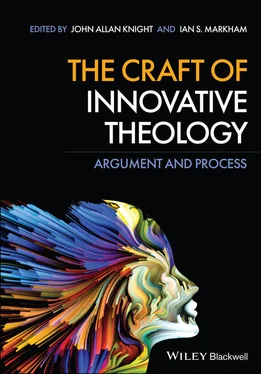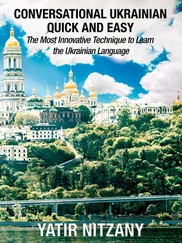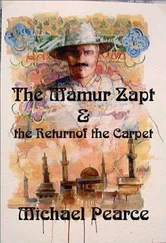1 ...7 8 9 11 12 13 ...25 Pluralistic theology never loses sight of the fact that it is a human response to the needs of the day, relying on human creativity, energy, and improvisation. Given the wide and varied needs of communities across the world, a genuinely pluralistic theology must make use of every source of insight available in order to “humbly follow truth wherever we find it.” 19In order to take advantage of the sheer wealth of creative thinking about God, pluralistic theology must remain open to all sources at hand, eschewing comfortable closure. The metaphorical dynamic at the heart of pluralistic theology allows it thus to be characterized as a form of bricolage , that is, a construction out of many, ready-to-hand, diverse sources – continuously being built, torn apart, and rebuilt toward a more useful form.
As I stated at the outset, I contend that all theology is inherently hybrid. Pluralistic theology reveals this feature more clearly in order to better use this creative source. As bricolage, pluralistic theology draws attention to the contingent, diverse nature of its components and contexts, while at the same time celebrating the metaphorical, expansive, and revelatory power of its compilation. Married to this centrifugal force, however, is the centripetal, particularizing, and poetic force which gives shape to pluralistic theology’s eventual results. The workings of this force can be seen through the issues of criteria and poesis, that is, if metaphorical predication gives rise to a plethora of possible forms of bricolage, how is one to choose which possibility is excellent and worth pursuing? Are all such instances of hybrid bricolage equally valid, valuable or effective? By what criteria is the centripetal force guided? Moreover, what is the role and responsibility of the theologian in creating a thoroughly pluralistic theology?
To illustrate these questions, imagine an example of pluralistic theology along the lines I have drawn so far. Liberated from both the worries that theology must be done according to the given, proper, and correct forms and traditions, as well as the illusion of objective certainty and conservative fetishes for precedent, a theologian sets out to consciously bring together significant aspects of, for instance, particular Christian and Hindu religious beliefs and practices. The object might be to develop a novel theological model for understanding the nature of prayer, for instance. 20After painstakingly studying the constituent traditions’ notions of prayer, their histories, varieties, and critiques, as well as partaking in both forms of prayer with great sincerity, the theologian brings into metaphorical “conversation” aspects of these concepts and practices from both traditions in a pluralistic theology. The question to be asked is: Given the necessarily limited scope of religious knowledge and practice available to the theologian-bricoleur, the particularities of their religious, social, theological, and cultural background, as well as the explicit and inchoateagenda(s) driving their project, how can anyone know whether the hybrid pluralistic theology they create has any cogency, legitimacy, or usefulness for themself or the communities they are bringing together? Just as an instance of bricolage can be relatively valuable, surely pluralistic theologies can be relatively good or bad, useful or irrelevant, beautiful or crass, delightful or tawdry. If pluralistic theology, in its expansive phase, celebrates the plethora of possible hybrids, by what measure, in its contrary precipitative phase, can one identify and determine the felicity of its results?
I suggest the criterion to be used should be aesthetic, in the sense not merely of inherent beauty, but also the comprehension, elegance, and simplicity through which it both delivers the goods desired by the relevant community and expands the senses in which these goods suffice. 21A pluralistic theology should be guided by the aesthetic qualities inherent in the hybrid: those fearful symmetries which reveal harmonious form, figure, unity in variety, fitness, utility, adaptability, goodness, and truth. Here I rely on the ancient Greek equivalence of the good, true, and beautiful when, in Philebus , we find Socrates stating “the good has retired into the region of the beautiful,” 22and again, in Gorgias we see him explicitly arguing that what counts as beautiful is to be judged so not only by the pleasure it gives, but, importantly, its utility also. 23However, harmonious expression of qualities is not in itself a sufficient marker. The beauty of a pluralistic, hybrid theology will lie also in its ability to bring to light some new, perhaps hitherto hidden, aspect of religious experience, knowledge, understanding, and/or feeling. The revelatory nature of pluralistic theology will be an aesthetic measure of its value. This revelation is not merely to shine light on inchoate wisdom brought to the surface through the action of metaphorical recombination but to show how the interstitial space constructed between the “home” and “other” tradition constitutes a possible locus of habitation. What pluralistic theology seeks to create is not just more knowledge or wisdom but a new, attractive, form of religious life. Its ultimate value will be found in the kinds of experience of being it makes possible. Just as the constant action of currents and waves builds sand bars in between opposite shores, the interstitial space between religious traditions is filled by a mobile region of intersection, sustained by the ongoing recombinant conversation between its parent religions. This shared locus of meaning is intended to be a potentially new way of being religious for adherents of its source traditions, as well as a new option for living for those outside of these religions. Importantly, this recombinant religious tradition will naturally reflect the implicit and explicit commitments, biases, and presuppositions of its poet, the pluralistic theologian. His/her responsibility in its creation will be to both create as beautiful, elegant, and useful a hybrid as they can, while allowing it to reshape themselves in its creation. 24The production of pluralistic theology – as is true for all theology, I would argue – thus becomes an expression of autopoesisas well. With this in mind the pluralistic poet-theologian must expand their minds in order to create something truly lovely. In so doing they autopoeticize in order to create, and create to autopoeticize. This formula aptly describes the experience of the dialectic at the heart of pluralistic theology.
Radical Risk: The Principle of Irony
We finally arrive at the quality of radical risk, characterized by irony. Irony is, I suggest, characteristic of all theology. It is present in the very attempt to speak about something over our heads, in the sense that we cannot hope to refer to a transcendent realm with immanent ideas and terms, yet this is exactly what we do. I have already alluded to the problems of religious language, fallibilism, and truth, and won’t rehearse these points here. But irony cuts deeper into the body of theology by revealing the absurdity with which we must all struggle. Perhaps no other philosopher has wrestled more profoundly with the idea of absurdity than Søren Kierkegaard, who bound irony and absurdity together at the heart of religious life.
Kierkegaard considered the basic facts of a religious life to be absurd. Christians are supposed to believe in an eternal, simple, infinite, transcendent God who simultaneously became incarnateas a temporal, composite, finite, human being. There are two possible responses to this paradox: to have faith or to take offense. What we cannot do, according to Kierkegaard, is to believe by virtue of reason. If one chooses reason, the absurdity of the choice causes offense and dismissal. If one chooses faith, one must suspend reason in order to believe in something which is higher than reason. Belief then can only be had by virtue of the absurd . 25
Читать дальше











